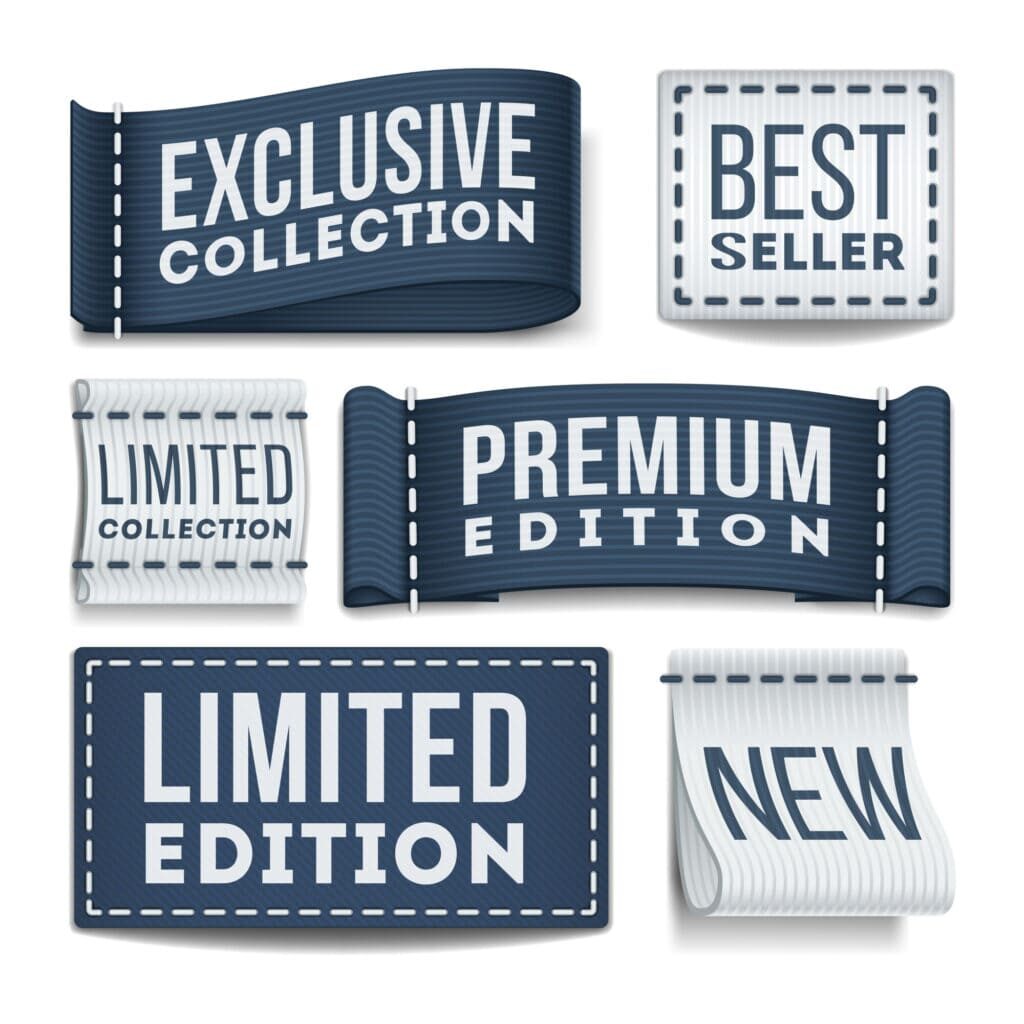Understanding the different styles of a custom woven label

"Branding" is the marketing buzzword of the decade, and for good reason. Building a brand checks a ton of important boxes for a business, from increasing recognition to building a relationship of trust to inspiring desire.
Branding apparel presents some unique challenges. Sure, you can throw your logo onto all your garments, but that may not always align with your vision. You may put branded tags or stickers on your garments, but those come off as soon as the garment leaves the store.
This is where labels come in handy, and there's no better choice than a woven label. Unlike printed labels, woven labels won't fade over time.
What are the different kinds of woven labels that you can use to brand your garments? Read on to find out.
Woven label materials and types
There are two different ways to break down woven labels by category. The first is looking at the type or material used, which you will often encounter when ordering woven labels. At Hi Labels, these include damask, taffeta, satin, and eco-size labels.
Damask labels
A Damask is a reversible fabric that bears the same pattern on both sides. In weaving, a damask label has a weave that has gone through both sides of the material so that the image or phrase is visible no matter what side you're looking at. Today, this is the most common type of woven label (and woven ribbon) you'll find on garments.
Damask labels are resilient and soft to the touch. They're made using either 100-denier or 50-denier threads, the latter being smaller and better suited for intricate designs.
Taffeta labels
You can also opt for taffeta labels. Taffeta labels are made from polyester and don't feel as soft as damask labels. Plus, you can't get as intricate with your woven design on a taffeta label.
You'll often see them used to make care labels, rather than branded labels. Care labels only need to be legible and not impeccably designed. Plus, care labels are often tucked away behind the branded label, keeping that rougher material away from the skin.
Satin labels
Satin labels are often used for luxury brands and expensive garments. Satin labels are delicate, shiny, extremely soft, and smooth to the touch.
You may consider satin labels if you're making clothing with sensitive skin in mind. However, Hi Label damask labels are also high in quality and suitable for most wearers.
Eco-size labels
At Hi Label, we offer the unique option of the eco-size label. These labels come in pre-set sizes that best fit our high-speed looms.
What makes them eco-friendly? Because they are optimized for our looms, these labels produce the least amount of waste. In an economy where consumers want to shop with sustainable companies, eco-size labels can improve your brand's sustainability efforts and your relationship with consumers.
Woven label folds
Another way to break down the different types of woven labels is to describe them by the folding technique used to create them. This will impact the shape of the label and how it's attached to the garment. Common options include no fold, end fold, book cover fold, Manhattan fold, and hanger loop fold.
No fold labels
As the name suggests, no fold labels (aka border labels) do not have any folds. Instead, each edge is sewn directly to the garment for a snug fit. These labels require less fabric, are difficult to remove from garments, and won't irritate the skin.
End fold labels
End fold labels start as rectangular pieces. The left and right sides are folded in, leaving you with either a smaller rectangle or a square, and then the left and right sides are sewed to the garment. These labels often bear the brand's name, as they typically provide a wider landscape than a no fold label.
Loop fold labels
Loop fold labels start as rectangular pieces. However, the piece is then folded in half and sewn along the short edges, which then become the top of the label once sewn to the garment, leaving an open loop. Loop folds are quite common in the garment-making industry and allow you to customize both the front-facing side and the back-facing side with separate designs.
Manhattan fold labels
A Manhattan fold label (aka a book cover label) looks somewhat similar to the loop fold label. However, instead of connecting the two edges so that they are even, the front edge is folded over so that the final product has three folds.
Manhattan fold labels are no longer as popular as they used to be, as they were designed to accommodate a larger seam allowance than we tend to see today. Manhattan folds can add extra bulk and weight to your garment and tend to take longer to produce than the popular loop fold label.
Hanger loop fold labels
A hanger loop fold label (aka a miter label) starts as a long, narrow rectangular piece. It has a 45-degree fold on each end so that the ends are facing straight up. Hanger loop folds get their name from their use to hang garments, but they're also great for loose clothing because the small number of stitches attaching each end to the garment won't add a ton of rigidity.
Brand your garments with woven labels
Branding is an important component of any business and in the fashion industry, a lot rides on your labels. The woven label is the most durable type of garment label on the market and Hi Label is proud to offer a wide variety of woven label choices.
Looking for more branded materials to include with your garments? We also provide other woven products, including these custom woven patches that make great gifts or extras for your loyal customers. Take a look around at all of our custom Hi Label services.





